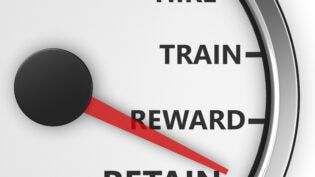5 Simple Steps to Boost Your Sales Reps’ Selling Power
By: Kate Kirby

For small businesses, sales is often among the top challenges—so implementing sales enablement processes may get punted down the to-do list. In fact, for many small businesses sales enablement feels like a luxury akin to the notorious civet coffee.
The term “sales enablement” comes across as relating to the enterprise—even though it’s a set of processes and (ideally) technologies that every B2B company does—even your small business. So let’s step back a moment to first define the term.
According to the research firm Forrester, “Sales enablement is a strategic, ongoing process that equips all client-facing employees with the ability to consistently and systematically have a valuable conversation with the right set of customer stakeholders at each stage of the customer’s problem-solving life cycle to optimize the return of investment of the selling system.”
In short, it’s about giving sales reps the content and assets they need to engage with buyers in a meaningful conversation that drives more sales. In fact, in a recent study conducted by Highspot, 75 percent of respondents from companies using sales enablement tools reported that their company had increased sales over the past 12 months.
In small businesses, individuals may have to wear many different hats, and the sales enablement function may be one of a long list of responsibilities for a person or team. Often, the reps themselves cobble together the content they need, whether it’s an email with a link, a document or PDF, or sometimes even a video, or a social link.
Sometimes that content is distributed via email, or stored in your company’s cloud storage system, which was not necessarily designed with sales enablement in mind. It gets lost, or saved locally, tweaked, and then subsequent updates by the marketing team never make it into the locally-saved deck. Hence version control issues and out-of-date branding and a poor experience for the buyer.
In recent years, companies of all sizes have recognized the importance of these lower-funnel sales conversations, and they are systematizing them so that reps don’t need to hunt down the right assets or create what they need—which are not core skills for most sales reps—and instead companies are making those steps easy.
What’s needed for sales enablement? Partnership with marketing, a good storage system, and ideally analytics.
When you’re getting started, here are five things to keep in mind:
Make it a team project
Start with getting a team together of people who interact with your buyers and customers regularly. This is essential, because first, each person, no matter what department they’re from, can add some depth to the collective understanding of the buyer experience; and second, you can get more easily group buy-in on any new processes and approaches.
Ask every member of this special team to step into the buyer’s shoes and map the buyer’s journey, from identifying the problem your product solves, all the way through consideration and purchase.
Note decision points
Look for key decisions that a buyer must make. Whether to implement a solution, build v. buy, purchasing criteria, etc.
Next, identify the content that you already have that maps to these decisions. Likely you already have a lot of sales-ready content, from blog posts to datasheets to presentations, that covers the key steps of the journey. And if you don’t, don’t worry. That content will come in time.
Corral the content
This is essential—one of the main time-sinkholes for sales reps is hunting down content. Gather all items into one central location. A dedicated sales enablement platform can help ensure content doesn’t get scattered across multiple systems and get off-brand again. When sales reps actually find the system makes their lives easier and faster, they won’t feel compelled to save their favorite assets to their laptop.
Leverage usage data
Top sales enablement platforms (also known as sales content management systems) are cloud-based and provide AI to surface the most relevant content to sellers. They can even provide analytics to help the team determine which content pieces drive the most revenue.
Now, organize content and label it, and for any gaps, work with marketing to create content, including email templates/call scripts.
Lather, rinse, repeat
With assets in one place, you can focus on optimizing content. Use the reporting to inform you how to grow your sales content library. By leveraging the information about how content is used, and what revenue it is generating, you can make more informed decisions around what types of content and approaches work best in all different sales scenarios.
If growing sales is important to your small business, sales enablement processes offer a way to increase productivity without having to hire more people immediately. It’s easy to start small and leverage technology to do the hard part. That way you’ll be on the road to increasing sales in 2018 and beyond.
2624 Views












